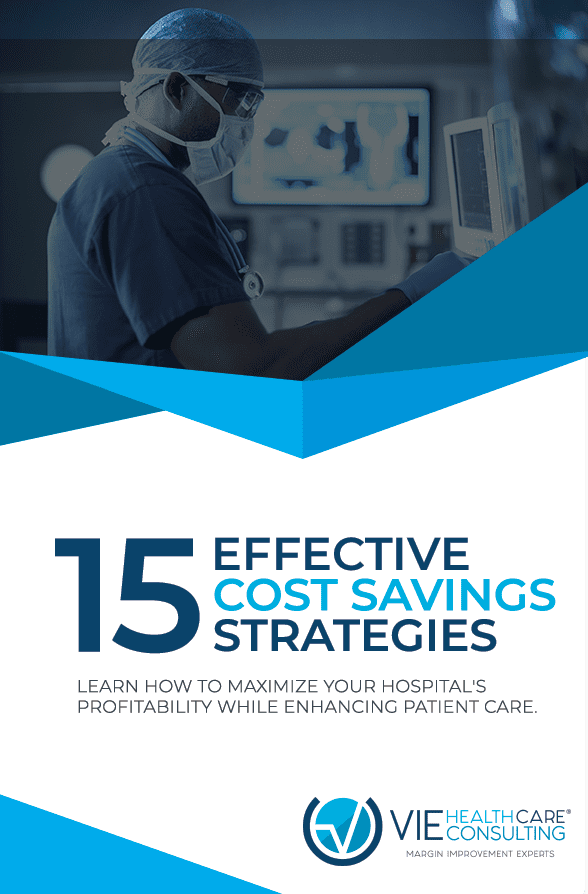Big Data in Healthcare Isn’t Enough – Small Data Is The Answer
Big data in healthcare is a term used to describe giant data sets that provide useful information when analyzed. For hospitals to maximize available cost savings opportunities the answers may be in the small data.
“Small data is data in a volume and format that makes it accessible, informative and actionable.”
This is available in “usable chunks” and connects people with timely, meaningful insights, organized and packaged – often visually – to be accessible, understandable and actionable for everyday tasks.”

The rise of small data in healthcare
Big data analytics has transformed healthcare in many areas. Analysts extract detailed statistics from a population or an individual to help to reduce costs, carry out new research and identify the early onset of disease.
But 2019 saw a gradual shift in emphasis towards “small data” analytics as hospitals examine their existing data to improve clinical and operational processes and identify cost savings.
For many clinicians and front line health care professionals in the healthcare industry, data offers the most value to their organizations as it can have a direct impact on patient care and profit margins.
Typical examples of small data include information relating to OR turnover times and missed clinical appointments. Small data provides detailed information on how many times a patient has been admitted to the ER within the last month, for example.
Tapping into the cost savings available
As leaders in cost reduction services, at VIE Healthcare we operate on the maxim that what can be measured can be improved, working on two key principles:
Data accuracy: It is possible to profit from data analytics by “measuring small” and then expanding your focus.
Use “real time” data: Don’t rely on line item spend which is more than 18 months old. To capture the true value of your spend, narrow your focus to review trends on a monthly basis, in real time; analyze the last 12 months of spend and then the last 3 months of spend in isolation.
Identify the margin improvement in your purchased services invoices
Most hospitals move straight to benchmarking when carrying out a cost analysis exercise of their purchased services spend. But without the line item details of your invoices, it is impossible to evaluate:
- Whether your hospital is paying the agreed rate for your invoices.
- Whether the hourly rates charged are consistent with the previous month and;
- If the items you are paying for are on or off contract.
Your first priority is to obtain 12-18 months of line item prices paid details the transactional information. It is the only data that provides your organization with the detail to understand your purchased services spend by vendor and by service category.
Obtaining the AP vendor and total spend for the last 12 months provides you with an overall picture, but no more than that.
To understand your purchased services spend, and uncover hidden cost saving opportunities, you must be able to see the line item details – the small data – in your invoices. Click To Tweet
The line item purchased services spend is complete on the invoices only.
Our patented Invoice ROI™ technology identifies the significant cost savings available in your small data to achieve unparalleled savings for your hospital in real time. Combining line item details with other data inputs, we identify trends, variations, quality and utilization improvement opportunities.
Take a deep dive into your supply chain
Research suggests that declining profit margins as a direct result of supply chain inefficiencies will continue to present major challenges for US health systems throughout the year. As the supply chain is expected to overtake labor costs as the #1 cost in US healthcare, implementing cost savings initiatives is critical.
Analyzing your line item spend by benchmarking can help your hospital to identify hidden cost savings.
Our unique approach at VIE Healthcare, analyzes not only your top 100 vendors, but the top 101-1000 vendors to ensure accurate benchmarking. Analyzing the small data in this “middle space” enables us to uncover dramatic cost savings in your hospital supply chain with the following strategies:
- We take a “deep dive” into the top 1000 vendors to reveal margin improvement opportunities.
- We identify significant cost saving potential from the top 101–200 vendors.
- We uncover further savings from the top 201–1000 vendors.
At VIE Healthcare®, our goal is to help hospitals reduce expenses, eliminate all unnecessary costs, deliver exceptional patient care, and save money whenever possible. Since 1999, we have partnered with healthcare organizations in non-labor expense reduction. Our team has collectively saved clients over $1 Billion through strategic cost savings and optimization processes.
Schedule a call with Lisa Miller to improve your hospital’s financial performance.



